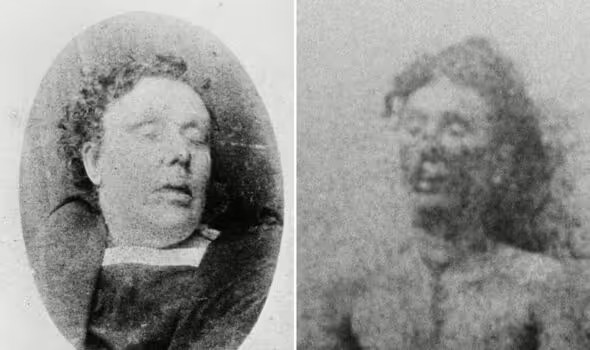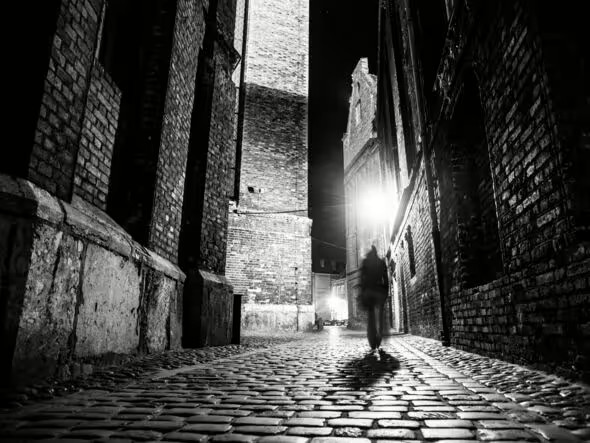An author who has been researching the Jack the Ripper case for close to 30 years claims that this is the face of the world’s most notorious serial killer.
Russell Edwards, a researcher on the Jack the Ripper, created this CGI black-and-white image of the killer as he would have appeared at the time using cutting-edge technology for facial reshaping.
After Mr. Edwards “proved” that Jack the Ripper was Aaron Kosminski, a Jewish immigrant from Poland who was one of the main suspects at the time of the horrific Whitechapel murders, he used DNA evidence from the shawl of one of his victims.
Mr. Edwards now asserts in a second book on the case that he not only has definitively identified the Jack the Ripper, but he also knows why he mutilated his victims in this manner and how he evaded justice.
In the Whitechapel neighborhood of east London, Jack the Ripper murdered at least five women between August and November 1888.
Three casualties had inward organs taken out, which prompted a hypothesis that the executioner had a few physical or careful abilities.

The Whitechapel murders, in which 11 mostly prostitute women were brutally murdered between April 1888 and February 1891, were actually the subject of police investigation.
The third to seventh of them, which are referred to as the “Canonical Murders,” were unquestionably committed by the Jack the Ripper.
Between August and November of 1888, the deaths of Mary Ann Nichols, Annie Chapman, Elizabeth Stride, Catherine Eddowes, and Mary Jane Kelly spanned nine weeks.
Chapman, Eddowes, and Kelly had their throats cut, post-mortem injuries, including injuries to the vagina, and body parts were taken from them. So, how exactly did Mr. Edwards “confirm” that Kosminski was the murderer?
On September 30, 1888, PC Watkins found the heavily mutilated body of Catherine Eddowes, one of the Ripper’s fourth victims, on a pavement in Mitre Square.
Her nose was cut open and her head was close to being severed. On the same night, he also took her as a victim. She had a blood-stained silk shawl.
In 2007, Mr. Edwards, a businessman from north London, discovered the alleged shawl at an auction in Bury St. Edmunds, Suffolk, nearly 120 years later.
He bought it out of curiosity, but he was skeptical because he saw what looked like blood and even semen stains still on the garment.
Later, it was found that acting Police Sergeant Amos Simpson saw her body being taken to the morgue as a strange “gift” for his wife, Jane.
It was auctioned off by Sergeant Simpson’s great-great-nephew David Melville-Hayes, despite the fact that she never wore it. It had been in the family for generations.
Given that Ms. Edwards was an impoverished drunk, Mr. Edwards was surprised that she would have worn such a lavish silk scarf with flowers on it.
However, the design and dyes used appeared to be comparable to those used in St. Petersburg at the time. Mr. Edwards began to wonder if it might have been a possession of Kosminski, a Ripper suspect who belonged to the Russian empire.
He pondered whether he could have left it at the scene. With the assistance of distant relatives of the victim and suspect, a lengthy series of DNA tests on the presumed blood and sperm stains began.
Surprisingly, there was a direct descendant of Ms. Eddowes who was a positive match for the blood stains.
A request to exhume Kosminski’s body was turned down, but the DNA in the semen stains also belonged to a person who was a descendant of Kosminski’s sister.
Mr. Edwards asserts that this is conclusive evidence regarding the identity of Jack the Ripper, a case that has been unsolved since 1888.
Since Kosminski was born on September 11, 1865, he was 22 and 23 when the murders occurred. He was the youngest of seven children and lived in Klodawa, close to Warsaw. When he was eight years old, his father passed away.
His mother remarried, and records indicate that his stepfather may have abused him sexually. The family fled to London’s East End in 1882, six years before the murders, to avoid anti-Semitism that had spread throughout eastern Europe following the death of Tsar Alexander II a year earlier.
Dr. Robert Anderson, head of the London Criminal Investigation Department, had named Kosminski as a key suspect in the murders investigation.
The Macnaghten Memorandum, an 1894 publication of previously confidential police reports, stated that detectives believed he had “strong homicidal tendencies” and a “great hatred of women, especially of the prostitute class.”
Because of the potential consequences of antiSemitism, they were reluctant to accuse a Jew even then because of political correctness.
Mr. Edwards then contacted his descendants to obtain as many historical family portraits as possible to feed into a sophisticated computer program that has created Kosminski’s likeness based on the appearance of close relatives because there are no known photographs of Kosminski.
A young man with piercing eyes, high cheekbones, and short hair appears in the new image.

More research by Mr. Edwards has since revealed how and why he believes the serial killer evaded justice because his brother was involved in freemasonry.
He received a number of photographs in February 2023, one of which showed 15 men all wearing identical suits and overgarments and sporting handlebar moustaches. It was discovered that they belonged to the Lodge of Israel, a Freemasonry organization created for British Jewish immigrants.
Isaac, the eldest brother of Kosminski, was one of them. He was a wealthy tailor who moved to London in 1870 and changed his name to Abrahams. Amazingly, the “Master Mason” Hiram Abiff was murdered by three assassins known as “The Juwes” in an ancient Masonic code for refusing to reveal his secrets.
The fable inspired the creation of the Masonic blood oaths, which include statements like “That my left breast had been torn open and my heart and vitals taken” and descriptions of mutilations like cutting throats and removing tongues.
Mr. Edwards is certain that the Jack the Ripper was following these Masonic instructions, not just some random mutilator.
He also thinks that his younger brother’s Masonic connections probably kept him from being arrested so that he wouldn’t hurt Jews.
Even more troubling, the Ripper left behind yet another relic at the Eddowes crime scene. The mysterious phrase “The Juwes are the men that will not be blamed for nothing” was written in chalk nearby.
with the Masonic spelling of the word Juwes.
After suffering a suspected schizophrenic breakdown in which he threatened his sister with a knife, Kosminski committed to the Colney Hatch lunatic asylum in North London in 1890. He was never taken into custody.
He passed away in the Leavesden Asylum in Hertfordshire 28 years later.

